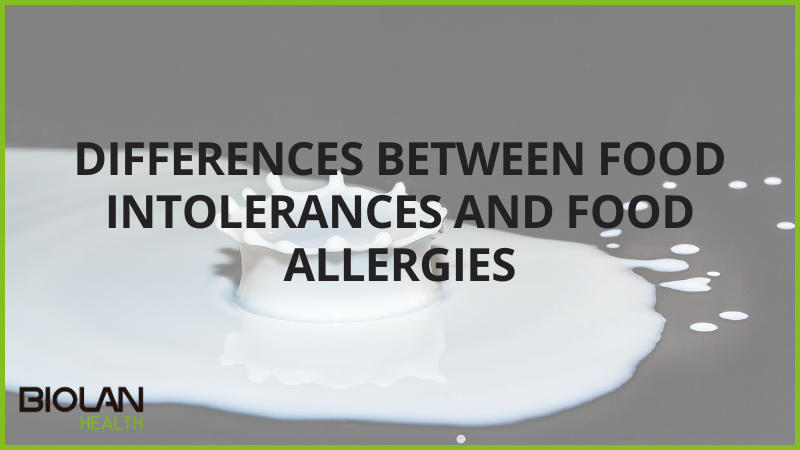Food intolerances and allergies are common occurrences in the population. It is estimated that about 20% of the population suffers a food reaction during their lifetime.
Allergies and intolerances are often confused and used interchangeably, but they are very different from each other. Do you know the differences between food intolerances and food allergies?
Differences between food intolerances and food allergies
Food allergies
Food allergies are reactions in which the immune system is involved in the response. This response can be mediated by immunoglobulin E (IgE) or not mediated by immunoglobulin E (IgE), as in the case of celiac disease.
This type of reaction occurs with the ingestion of a small amount of food, immediately, and can lead to the onset of severe symptoms.
It is estimated that between 1.4-3.6% of the adult population suffers from this type of allergy and 5-8% in children.
Food intolerances
In this type of reactions, the immune system is not involved. Among the causes of this type of reactions may be:
- Metabolic cause: due to a deficit of enzymes involved in the metabolism of the food in question. This is the case of lactose or fructose intolerance, for example.
- Pharmacological cause: due to the effect of vasoactive amines found naturally in some foods and which are capable of triggering gastrointestinal and neuralgic clinical reactions. For example, the accumulation of histamine can lead to an allergic reaction or intolerance, since the body’s elimination mechanisms for this substance do not work properly.
- Indeterminate reactions: This type of reaction includes reactions to additives. For example, reactions to high concentrations of sulfite.
Food intolerances cause discomfort, but are not as severe as a disproportionate allergic reaction.
However, this type of reaction has a much higher incidence in the population than allergic reactions.
Methods of diagnosis of food intolerances and allergies
In order to diagnose this type of food reactions there are different tests. Among some of them are:
- Diets based on the elimination of food: A diet is prescribed without the food or foods that are suspected of causing the reaction and then reintroduced gradually.
- Skin testing: a skin panel is performed with the food (s) suspected of causing the reaction, by pricking the sample area and observing the skin reaction.
- RAST tests (radioallergosorbent): small samples of the patient’s blood are mixed with food extracts. In the event of an allergic reaction, antibodies would be generated which are detectable in the sample. This test is, therefore, not suitable for food intolerance processes in which there is no reaction on the part of the immune system.
- Exhaled hydrogen test: this type of test is mainly used for the diagnosis of lactose intolerance. For those patients who have a deficiency of the enzyme responsible for metabolizing lactose (lactase), bacteria in the colon ferment the lactose that the body is able to absorb, generating a large amount of free hydrogen that is detected.
- Intestinal biopsies: used mainly for the diagnosis of celiac disease. A superficial part of the intestine is removed to detect and analyze alterations in the intestine or in its cells.
In this regard, the efficiency of some of these tests has been questioned by various professionals. In addition, many of these tests are very invasive, as is the case of intestinal biopsy.
Therefore, the development of PoC devices or other types of tests, either immunological or genetic, can offer faster and less traumatic results for the patient. For example, the use of antibody and genetic tests for the diagnosis of celiac disease is currently being promoted.
In this way, by using these devices it will be possible to distinguish the different reactions, regardless of the differences between food intolerances and allergies in a faster, simpler and more accurate way.
Did you like this post? You can subscribe to our newsletter to receive blog updates and the latest news!


